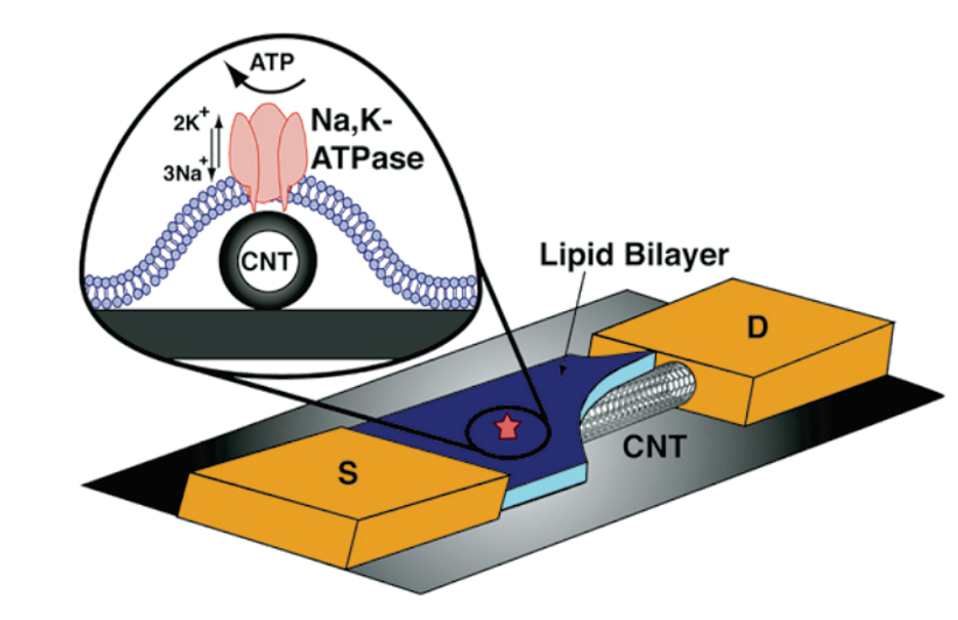Biosensors are analytical devices used to detect the presence or concentration of biomolecules, biological structures, or microorganisms. There are various types of biosensors such as enzyme-based, tissue-based, immunosensors, DNA biosensors, thermal, and piezoelectric biosensors. Biosensors are commonly used in biotechnology, agriculture, food science, and biomedical diagnostics. These devices consist of three parts, which include components that recognize the analyte and produce a signal, a signal transducer, and a reader device. The following invention addresses issues associated with the current technology used in nanotubes and nanowires resulting in poor semiconductor and transistor performance.
Researchers at LLNL have developed a nanotube sensor (single-walled or multi-walled carbon nanotubes) enclosed within a highly selective lipid bilayer that can detect variations in ion transport using signal amplification generated from the disruption of protein pores across the lipid layer. Changes in the device’s transistor current are recorded by an external circuit with high efficiency as a result of the direct interface between the ion flow channels and the reporting nanostructure. The main sensing element of the device, as shown in the figure, is a carbon nanotube field-effect transistor (FET) with a single-wall carbon nanotube (CNT) connecting the source (S) and drain (D) electrodes. Each nanotube is wrapped in a lipid bilayer shell that houses the sensing ion channel proteins such as Na, K-ATPase. The bilayer also insulates the nanotube surface from the solution providing a barrier to non-specific interactions. The lipid bilayer does not contact the nanotube directly; instead, it rests on a thin permeable polymer cushion adsorbed on the nanotube. The sensing principle exploits the high sensitivity of carbon nanotube transistors to gating by the external electric fields. The nanotube provides superior detection and permits straightforward integration with a large degree of flexibility. The lipid bilayer nanotube or nanowire sensor and the biosensor device feature high selectivity, low cost and low power consumption.
- High sensitivity resulting in superior detection and straightforward integration with a large degree of flexibility
- High selectivity, low cost and low power consumption
- Environmental Monitoring
- Food science
- Biomedical
- Biotechnology
LLNL has obtained a patent (US Patent 7,745,856) covering this technology (LLNL Internal Case # IL-11505)


